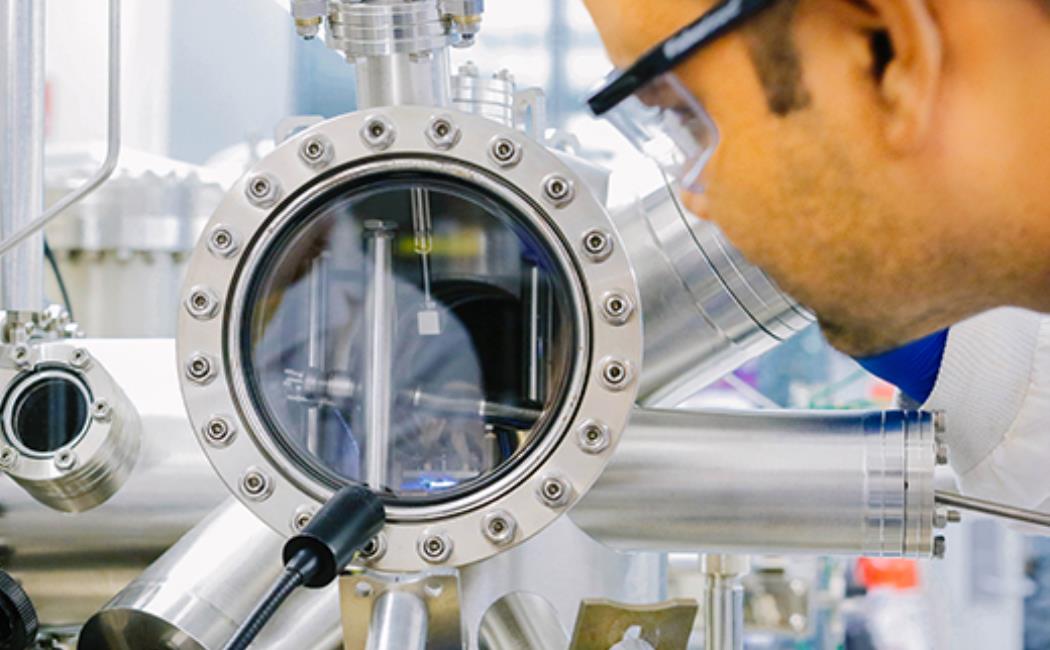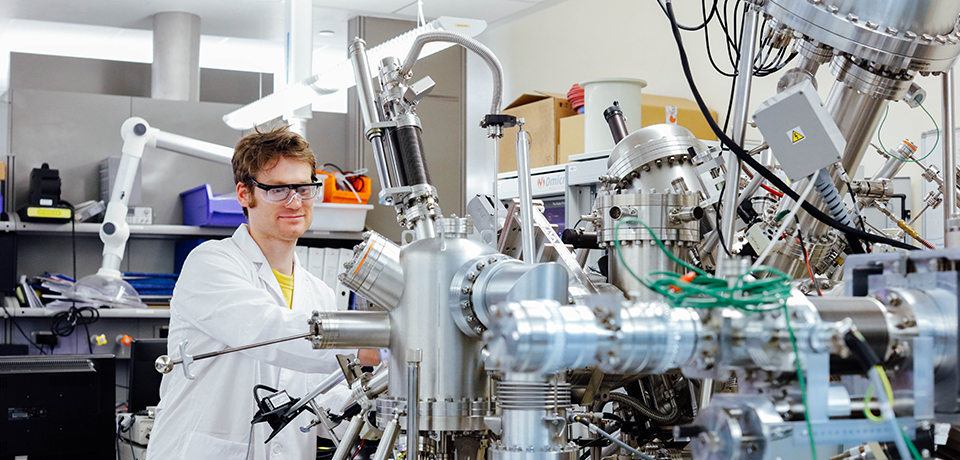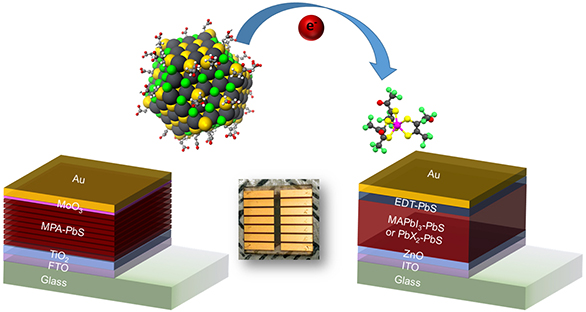
29 January, 2018

The performance of solar cells that consist of semiconductor nanoparticles surrounded by ligand molecules is now easier to control. Researchers from KAUST have developed a method that enhances the ability of these colloidal quantum dot (CQD) solar cells to convert the sun’s energy into electricity by altering the surface chemistry of their functional layers in a noninvasive way1, 2.
CQDs, such as lead sulfide, are readily processed in solution and benefit from highly tunable and narrow light-emission ranges, depending on their size and composition. “This makes them compelling building blocks for light-harvesting, detection, and emission technologies,” says materials engineer, Aram Amassian, who led the team. Recent breakthroughs in solution-phase exchange and device engineering, such as large-area, lost-cost techniques that use ink-based coating and printing for material deposition, mean that CQD solar cells hold potential for high-performance photovoltaic devices.
The CQD surface chemistry serves multiple, simultaneous and often competing purposes: these include stabilizing the colloidal ink and maintaining nanoparticle cohesion in the solid. However, according to Amassian, existing approaches cannot fully passivate or dope CQDs without inadvertently affecting other properties, especially their photovoltaic response. “Chemical modifications also tend to involve intricate surface chemistry,” he adds.
 In response, Amassian’s team, in collaboration with Georgia Institute of Technology, USA, and the University of Toronto,
In response, Amassian’s team, in collaboration with Georgia Institute of Technology, USA, and the University of Toronto,  Canada, has devised a mild, single-step approach that incorporates molecular dopants into solar cells. “The dopant molecules do not chemically bind to the CQD surface but remotely transfer charges to it,” explains PhD candidate Ahmad R. Kirmani, who selected the molecules and designed the protocols.
Canada, has devised a mild, single-step approach that incorporates molecular dopants into solar cells. “The dopant molecules do not chemically bind to the CQD surface but remotely transfer charges to it,” explains PhD candidate Ahmad R. Kirmani, who selected the molecules and designed the protocols.
“All nanocrystal films, even the most closely packed ones used in state-of-the-art CQD solar cells, have nanoscale pathways through which molecules of the right size can diffuse,” explains Amassian. The researchers soaked the solar cells in the dopant solution for an optimum time, allowing dopant molecules to travel through these pathways. The dopants effectively tuned electron and hole concentrations in the layers while passivating electronic defects.
“A key difficulty was to have a simple process without compromising doping efficiency,” says Kirmani, noting that choosing a suitable solvent and determining the needed amount of dopant molecules helped him optimize the process.
Amassian’s team demonstrated that their approach can apply to different CQD solar-cell materials, functional layers and device architectures. Specifically, their protocols promoted electron transport in the light-harvesting layer1 or limited electron back-flow into its contiguous hole-transporting counterpart2.
The team is now investigating the scalable, low-cost manufacturing of CQD solar cells in ambient air—a major hurdle to commercialization. Typical fabrication methods demand expensive, controlled humidity conditions to achieve cell stability and efficiency. The researchers are studying the role of the hole-transporting layer under ambient manufacturing conditions and the subsequent device stability.
Remote molecular doping of colloidal quantum dot photovoltaics. Kirmani, A. R., Kiani, A., M. Said, M. M., Voznyy, O., Wehbe, N., Walters, G., Barlow, S., Sargent, E., Marder, S. & Amassian, A. ACS Energy Letters, 1, 922–930 (2016).| article
Kirmani, A. R., García de Arquer, F. P., Fan, J. Z., Khan, J. I., Walters, G., Hoogland, S. Wehbe, N., Said, M., Barlow, S., Laquai, F., Marder, S., Sargent, E. & Amassian, A. Molecular doping of the hole-transporting layer for efficient, single-step-deposited colloidal quantum dot photovoltaics. ACS Energy Letters, 2, 1952–1959 (2017).| article